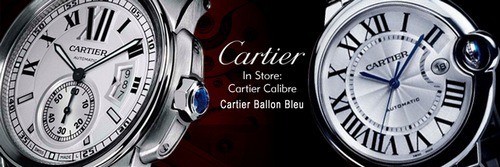The Marketing mix of Cartier analyses the 4Ps of Cartier, including the Product, Price, Place, and Promotions. Cartier is a private company of French origins. It has the image of a luxury brand and hence caters to high-income people. The brand has an excellent reputation and is known globally for its premium products and packaging. Louis-Francois Cartier founded Cartier in 1847, and its headquarters in Paris, France.
The company manufactures, designs, sells, and distributes its products worldwide, including watches and jewelry. Currently, it is a subsidiary of its parent company Richemont. Cartier is a brand that has successfully blended fine craftsmanship with timeless elegance and legacy. It has created a unique and distinctive place, and its products are a true testimony of this fact. Some of its chief competitors are as follows-
- Tag Heuer
- Longines
- Omega
About Cartier
- Type: Luxury goods company
- Industry: Luxury goods
- Founded: 1847
- Founder: Louis-François Cartier
- Headquarters: Paris, France
- Area served: Worldwide
- Key people: Cyrille Vigneron (CEO) and Pierre Rainero (President)
- Number of employees: Over 13,000+
Table of Contents
Cartier Product Strategy
Cartier was the first company to make wristwatches for men and afterward became the first designer responsible for models like Baignoire, Tortue, and Tank. Later, the company decided to add other products to its product kitty and thus ventured into the jewelry designing sector.
Cartier, a renowned luxury goods company, offers a diverse and high-end product mix across different categories.
The new Product Mix of Cartier in 2023 is as follows (Source).
- Jewelry: This is the core of Cartier’s business. Their jewelry line is celebrated for its high-end pieces made with precious metals, diamonds, gemstones, and exceptional craftsmanship. Iconic collections include the Love Bracelet, Trinity de Cartier, Juste un Clou, and Panthère de Cartier.
- Watches: Cartier is also famous for its luxurious timepieces that showcase a blend of Swiss watchmaking and unique design aesthetics. The range includes various styles of men’s and women’s watches, from classic to sporty. Notable collections include the Santos, Tank, Ballon Bleu, and Drive de Cartier.
- Accessories: The brand offers a variety of luxury accessories, including leather goods like handbags and wallets, eyewear, writing instruments, key holders, card holders, and other small leather goods. These products are known for their quality materials and elegant design.
- Fragrances: Cartier has a line of fragrances for men and women, offering sophisticated and elegant scents. Each fragrance is a unique blend of aromatic ingredients.
- High Jewelry: This division focuses on creating extraordinary, one-of-a-kind jewelry pieces using rare and precious gemstones. These high jewelry creations are often showcased at prestigious events and exhibitions.
Cartier’s product and marketing strategy also includes diversification into other segments like bags, belts, scarves, cufflinks, key rings, lighters, and stationery. They were also one of the first companies to make wristwatches for men and have since developed a range of watches and jewelry items.
Cartier Place Strategy
Cartier is an international brand with global exposure. Its operations are spread over one hundred and twenty-five countries, with nearly two hundred stores. Its diverse range of diversified products are sold in these outlets by experienced employees. Its perfumes are available at high-end boutiques. The brand has also opened online stores to meet the ever-growing demands of online shoppers.
Cartier sells products that are available online marketing and in exclusive outlets like top-quality resorts and hotels worldwide. Its three essential flagship stores are London, New York, and Paris. In 2008 and 2015, it opened another flagship store in Seoul and Houston.
Cartier’s place strategy, a key component of its marketing mix business today, is focused on maintaining its prestigious image and ensuring accessibility to customers of its high-end products. Here are five key points outlining this strategy:
- Global Retail Presence: Cartier has a significant global footprint, with operations across 125 countries. This extensive international presence allows them to cater to various markets and demographics.
- Exclusive Boutiques and Flagship Stores: Cartier has established upscale boutiques and flagship stores in prime locations in major cities like Paris, New York, and London. These stores are strategically located in high-end shopping districts and areas frequented by their target clientele.
- Selective Distribution: Cartier’s products are available worldwide, so the brand employs a particular distribution strategy. This means their products are sold only through Cartier boutiques, select department stores, and authorized retailers to maintain exclusivity and control over the brand experience.
- Online Presence: Understanding the importance of digital channels, Cartier has also embraced e-commerce. This allows them to cater to the growing number of consumers who prefer online shopping, enhancing their global reach and accessibility.
- Partnership with Luxury Retailers: Cartier collaborates with high-end luxury retailers and department stores. These partnerships are crucial in markets where Cartier does not have a direct physical presence, ensuring their products are accessible to a wider audience without compromising their luxury brand image.
Cartier Pricing Strategy
Cartier is a premium brand offering premium and exclusive products. It deals with society’s upper section, which prefers exclusive and rare pieces. As money is not the primary consideration for such high-profile people, they can afford the premium pricing policy of this brand. Its pieces are value-added and hence fetch high prices easily. One of the main advantages of the brand is its reputation in the market, which has survived for so long as a top-class brand. Cartier has more to offer than its competitors; hence, they do not have to compromise by keeping a competitive pricing policy with premium prices for exceptional products. They have always adopted a premium pricing policy for all their products.
Cartier’s pricing strategy is an exemplary model of how luxury brands manage pricing to maintain exclusivity and prestige. Here is Cartier’s marketing mix with a detailed breakdown of the final product:
- Premium Pricing Strategy: Cartier employs a premium pricing model. This is a common approach in the luxury goods market, where prices are set high to reflect the products’ quality, craftsmanship, and exclusivity. This strategy aligns with Cartier’s brand image as a symbol of luxury and sophistication.
- Value-Based Pricing: Cartier’s pricing is heavily influenced by the perceived value of its products. This includes the craftsmanship, the brand heritage, the quality of materials (like diamonds, gold, and platinum), and the intricate designs. This approach ensures that the price reflects the product’s exceptional quality and luxury status.
- Segmented Pricing: Different product lines within Cartier’s portfolio are priced differently based on their target market segment. For instance, high jewelry pieces and limited-edition watches are priced significantly higher than some more accessible jewelry items. This segmented approach caters to different levels within the luxury market.
- Dynamic Pricing for Exclusivity: Cartier may adopt dynamic pricing for rare and unique pieces, such as high-end jewelry or limited-edition watches. Prices for these items reflect their material value and their rarity, exclusivity, and the exceptional craftsmanship involved.
- Psychological Pricing: Cartier also leverages the psychological impact of its pricing. The high price points contribute to the perception of Cartier’s products as status symbols and luxurious collectibles. This pricing approach reinforces the brand’s exclusivity and desirability among its affluent customers.
Cartier Promotion Strategy
Cartier has a history of catering to celebrities and royalty. They are their actual ambassadors. The first patron of royalty status for the brand Cartier was Princess Mathilde. Kate Middleton wore a Ballon-Bleu Timepiece from Cartier, and King Edward VII placed the brand based on an order for 27 tiaras in 1902. It became a favorite of various royal houses in Russia, Romania, Portugal, and Spain. Exclusivity is this brand’s mantra, and they try to project all their items as luxurious, exclusive, and first-class. Its watches come with a personalized box that customers appreciate.
The brand has taken the help of online obsession and has started advertising through social media platforms via Twitter and Instagram. Cartier has managed global popularity through its promotional activities. Good advertising has increased its brand visibility. Eye-catching ads are aired on television worldwide and provide maximum exposure. Its products and designs are displayed in elite magazines with a worldwide viewership.
Some Recent Video ads and Print ads of Cartier are:
Panthère de Cartier: a new film from the Maison, directed by Nathalie Canguilhem – YouTube
Cartier Adverts – DAILY COMMERCIALS
Cartier advert ft. Vanessa Kirby (dailycommercials.com)
Liked this post? Check out the complete series on Marketing Mix

